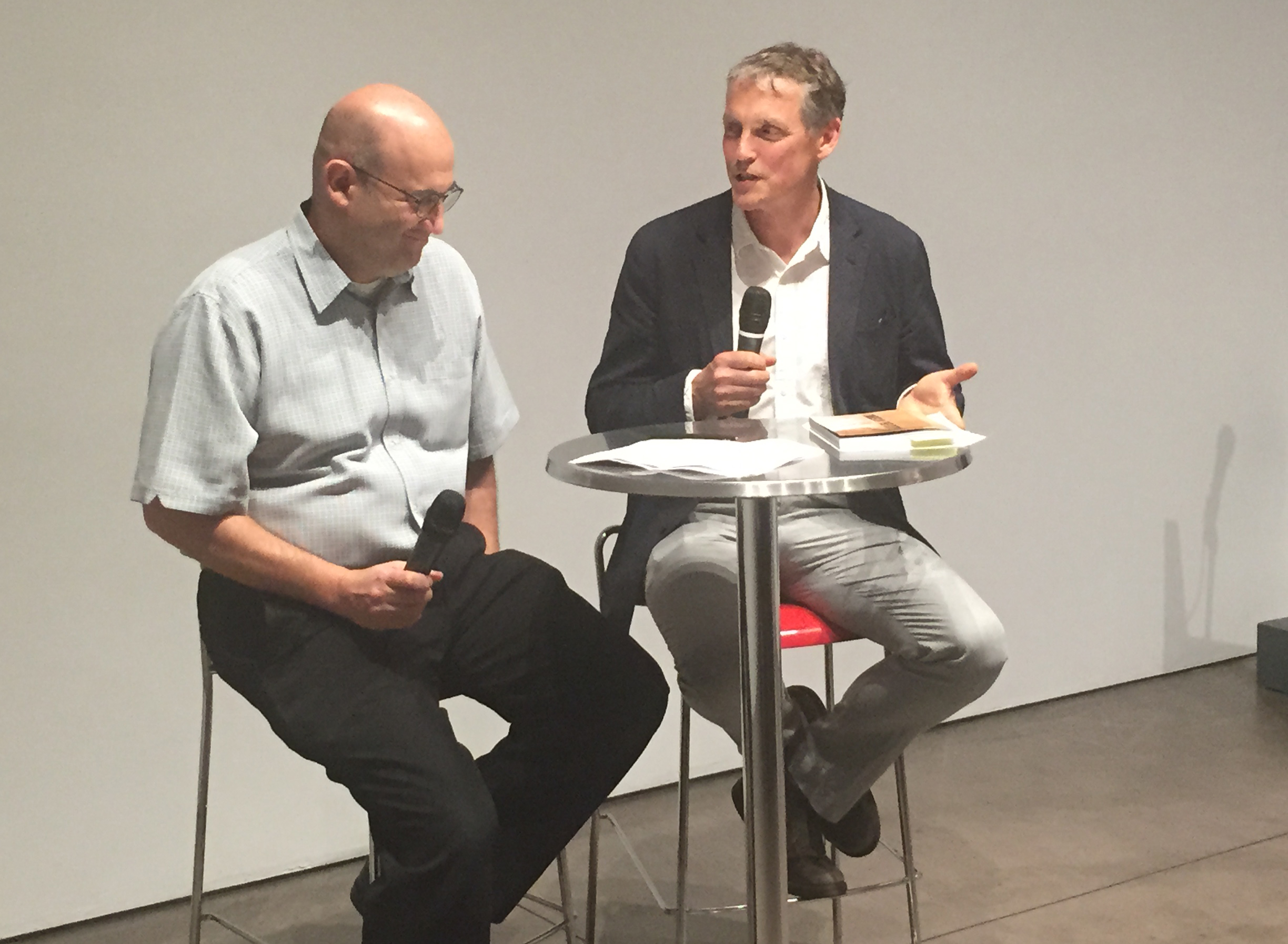by: ac
On 06.18.15, Andrew Bernheimer, AIA, NCARB, partner at Bernheimer Architecture, and Alan Organschi, partner at Gray Organschi Architecture, spoke about their book, Timber in the City: Design and Construction in Mass Timber, at the Center for Architecture’s monthly Oculus Book Talk. The book is a compilation of essays, innovative mass timber projects by committed practitioners, and student winners of the Timber in the City Competition sponsored by Association of Collegiate Schools of Architecture, the Binational Softwood Lumber Council, and Parsons The New School for Design.
Spearheading the mission of the book is a demanding essay by Organschi, which challenges the historic perspective of the fragile nature of wood as a building material and the fear of deforestation. He melds economic, political, and chemistry-based factors to argue for the transformation of building techniques. This essay seeks to dispense with the romanticism of wood construction and look at its attributes honestly and forthrightly. Organschi tells us that, while the design profession positions itself as a “maker” community, we are really consumers: we are “pulling hard on the economic chain of building resources.” He deftly explains the dangers of relying on conventional construction methods and manufacturing/extraction processes that are damaging to the environment. With an almost evangelical stance, he proposes that the future built environment can be reimagined using “efficient glue-laminated assemblies.” He cites visionary schemes for Swedish cross laminated timber (CLT) parking structures, and bridges made of composite heavy timber. In his formidable talk, Organschi delved deeper into why mass timber is a solution: the timber industry is committed to using every bit of the material generated from a tree when producing CLT. Marching from one brilliant infographic to another, Organschi’s talk illustrated the damage done to the earth due to various construction materials. His detailed and insightful explanations of cross grain laminates and hybrid systems for mass timber construction paint a very convincing argument for the material in the urban context.
But what are the authors’ definitions of the city? There is a sense throughout the text that urban is only big urban, and suburban is bad. Maybe there is a middle ground where suburbia densifies and embraces mass timber because the culture of wood building is already present.
Andrew Waugh’s essay states similar facts with more poetic intent: “Timber buildings are wonderful to live in, with inherent humanity and a natural regulation of moisture and humidity. Sounds are softer and temperatures more comfortable.” Both Waugh and Organschi discuss the carbon sink argument: “A cubic meter of engineered timber can remove up to a ton of carbon dioxide from the atmosphere, storing the carbon and releasing oxygen,” writes Waugh.
Timber in the City is primarily a tool for advocacy. The lessons learned from the cross-pollination of the built work of professionals and the ideas of students are intriguing. I would have liked to see the competition brief and possibly the juror’s comments. There are, as with all student work, some worrisome realities that were not dealt with in the winning proposals. Most proposals put forth a cutting-edge fabrication lab on the ground floor of a Red Hook building, an A Zone flood risk area. The site was chosen for the competition before Hurricane Sandy, so some naiveté is allowed, but an essential question is how mass timber operates in a flood plain where hurricane winds and storm surges can occur, likely with increasing frequency. If we are confronting changes in attitudes about building culture, some radical thought towards that issue is needed. My favorite entry was the 19-story wood “house” proposed by Virginia Tech student Emily Hagan. The ground-floor programming is temporal enough to be a wise spatial alternative for flood zones, and the 19-story vertical wood slab of a building actually feels appropriate around the cranes and grain towers of the historic waterfront.
The book is well produced and handsome. The projects illustrated are vivid renditions by both students and practitioners. But I missed the conversations. At the end of Organschi’s talk, Bernheimer returned to the stage and asked about one of Organschi’s current projects under construction: “How it is getting built?” This is at the core of the mass timber issue in urban areas. City agencies and the academy need to be educated. I was happy to see that the entries from the student competition were from all over the country with a variety of public and private institutions. The East Coast elite can’t keep this stuff to themselves.
The power of this book is in its ability to ignite imagination and therefore orchestrate radical policy – and to ask even more questions about the future of timber in the city.
Annie Coggan is a Principal with Coggan and Crawford Architects, and teaches at the Fashion Institute of Technology and the School of Visual Arts in New York City.
Want more? Watch the Timber in the City Oculus Book Talk on Vimeo.
Event: Oculus Book Talk: Timber in the City
Location: Center for Architecture, 06.18.15
Speakers: Andy Bernheimer, AIA, NCARB, Partner, Bernheimer Architecture, and Alan Organschi, Partner, Gray Organschi Architecture
Organizers: AIANY Oculus Committee
Oculus Book Sellers: McNally Jackson, 52 Prince Street








